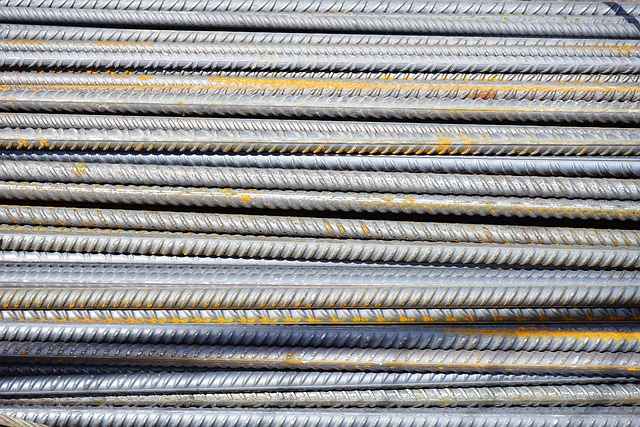
Steel in construction
Published on
Average Read time: 2 minutes 15 seconds
Steel is a fundamental material in construction, widely used for its strength, durability, and versatility. Its use in construction spans various applications, from structural framing to cladding and architectural detailing. Here's a closer look at how steel is used in construction:
Structural Framing: Steel is commonly used for structural framing in buildings and infrastructure. Steel beams, columns, and trusses provide support and stability to structures, allowing for large open spaces and flexible design options. Steel framing offers high strength-to-weight ratios, allowing for lighter structures that require fewer materials and can withstand heavy loads.
High-Rise Buildings: Steel's strength and durability make it an ideal material for high-rise buildings. Steel framing allows for taller and more slender structures, maximizing usable floor space and minimizing the need for interior columns. Steel's ductility also enables buildings to better withstand dynamic loads, such as wind and seismic forces.
Bridges and Infrastructure: Steel is widely used in the construction of bridges, viaducts, and other infrastructure projects. Steel bridges offer high strength and durability, allowing for longer spans and reduced maintenance requirements. Steel's flexibility also makes it suitable for modular and prefabricated bridge components, reducing construction time and costs.
Roofing and Cladding: Steel roofing and cladding systems are popular for their durability, weather resistance, and aesthetic appeal. Steel roof panels and wall cladding provide protection against the elements while offering design flexibility and ease of installation. Additionally, steel roofing materials are lightweight, reducing structural loads and allowing for longer spans.
Prefab and Modular Construction: Steel is well-suited for prefabricated and modular construction methods, where building components are manufactured off-site and assembled on-site. Prefabricated steel structures can be quickly assembled, reducing construction time and labor costs. Modular steel building systems offer flexibility and scalability, allowing for easy expansion and reconfiguration.
Industrial and Commercial Facilities: Steel is commonly used in the construction of industrial facilities, warehouses, and commercial buildings. Steel framing systems offer clear spans and high ceilings, providing efficient space utilization for manufacturing, storage, and distribution operations. Steel's durability and resistance to fire and corrosion make it ideal for industrial applications.
Architectural Features: Steel is often used to create architectural features and elements in buildings, such as canopies, atriums, and staircases. Steel's versatility allows for complex shapes and designs, enabling architects to realize their creative vision while maintaining structural integrity and durability.
Seismic Retrofitting: In earthquake-prone regions, steel is used for retrofitting existing structures to improve their seismic performance. Steel braces, frames, and reinforcements can be added to buildings to enhance their strength and resilience against seismic forces, reducing the risk of damage and collapse during earthquakes.
Structural Framing: Steel is commonly used for structural framing in buildings and infrastructure. Steel beams, columns, and trusses provide support and stability to structures, allowing for large open spaces and flexible design options. Steel framing offers high strength-to-weight ratios, allowing for lighter structures that require fewer materials and can withstand heavy loads.
High-Rise Buildings: Steel's strength and durability make it an ideal material for high-rise buildings. Steel framing allows for taller and more slender structures, maximizing usable floor space and minimizing the need for interior columns. Steel's ductility also enables buildings to better withstand dynamic loads, such as wind and seismic forces.
Bridges and Infrastructure: Steel is widely used in the construction of bridges, viaducts, and other infrastructure projects. Steel bridges offer high strength and durability, allowing for longer spans and reduced maintenance requirements. Steel's flexibility also makes it suitable for modular and prefabricated bridge components, reducing construction time and costs.
Roofing and Cladding: Steel roofing and cladding systems are popular for their durability, weather resistance, and aesthetic appeal. Steel roof panels and wall cladding provide protection against the elements while offering design flexibility and ease of installation. Additionally, steel roofing materials are lightweight, reducing structural loads and allowing for longer spans.
Prefab and Modular Construction: Steel is well-suited for prefabricated and modular construction methods, where building components are manufactured off-site and assembled on-site. Prefabricated steel structures can be quickly assembled, reducing construction time and labor costs. Modular steel building systems offer flexibility and scalability, allowing for easy expansion and reconfiguration.
Industrial and Commercial Facilities: Steel is commonly used in the construction of industrial facilities, warehouses, and commercial buildings. Steel framing systems offer clear spans and high ceilings, providing efficient space utilization for manufacturing, storage, and distribution operations. Steel's durability and resistance to fire and corrosion make it ideal for industrial applications.
Architectural Features: Steel is often used to create architectural features and elements in buildings, such as canopies, atriums, and staircases. Steel's versatility allows for complex shapes and designs, enabling architects to realize their creative vision while maintaining structural integrity and durability.
Seismic Retrofitting: In earthquake-prone regions, steel is used for retrofitting existing structures to improve their seismic performance. Steel braces, frames, and reinforcements can be added to buildings to enhance their strength and resilience against seismic forces, reducing the risk of damage and collapse during earthquakes.
Overall, steel plays a vital role in modern construction, offering numerous advantages in terms of strength, durability, sustainability, and design flexibility. Its widespread use across various construction sectors demonstrates its importance as a primary building material in the built environment.